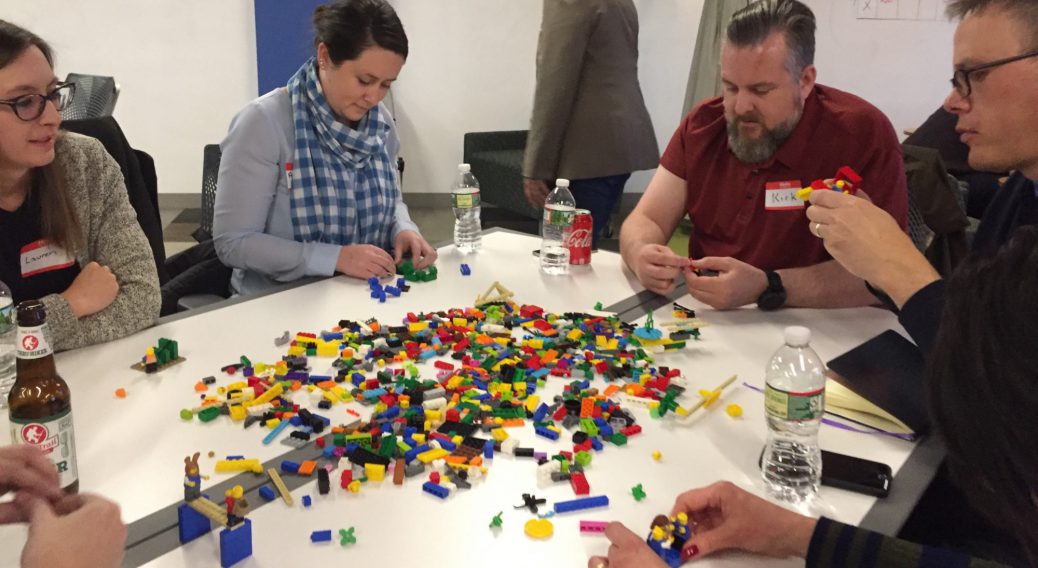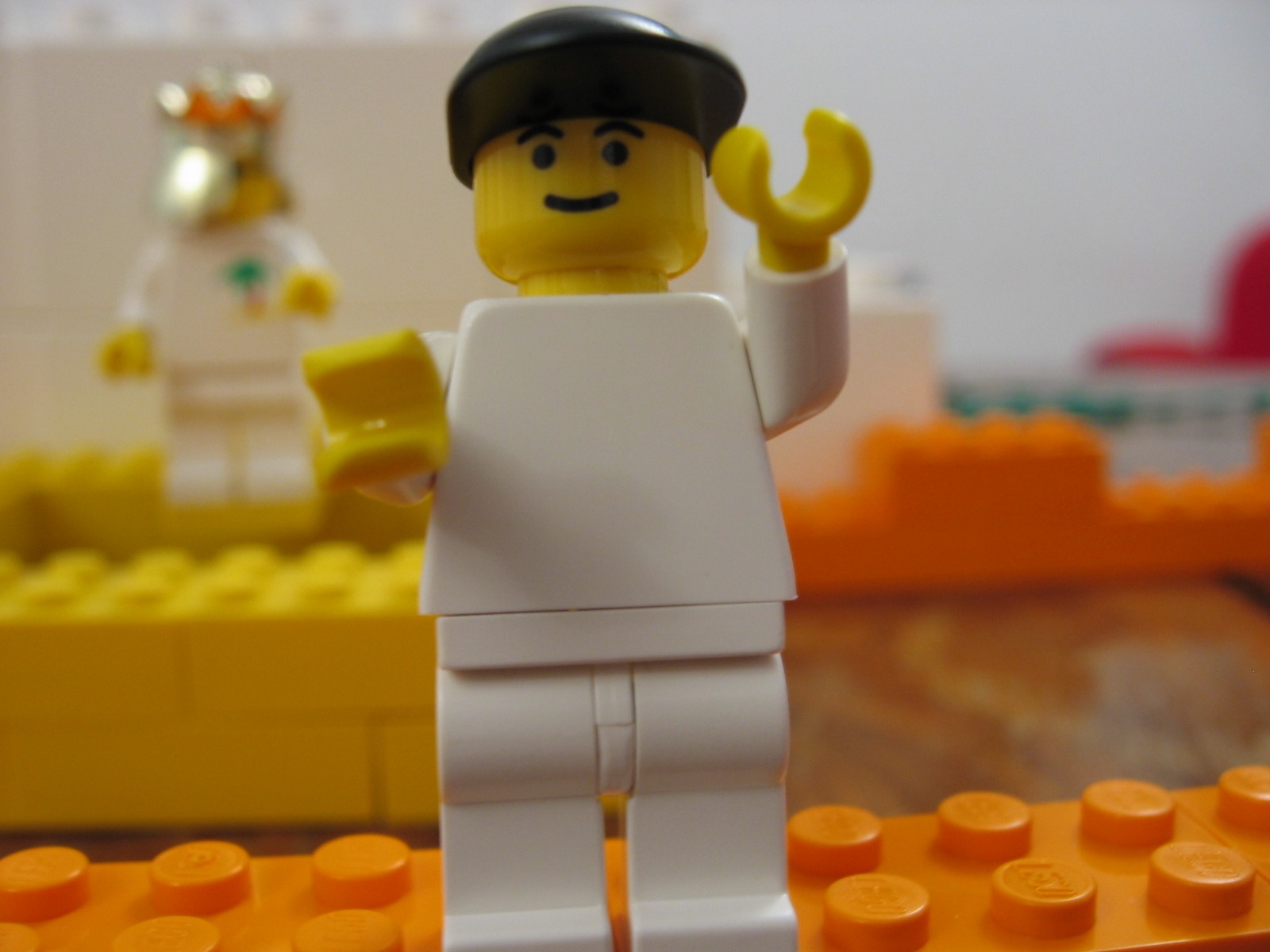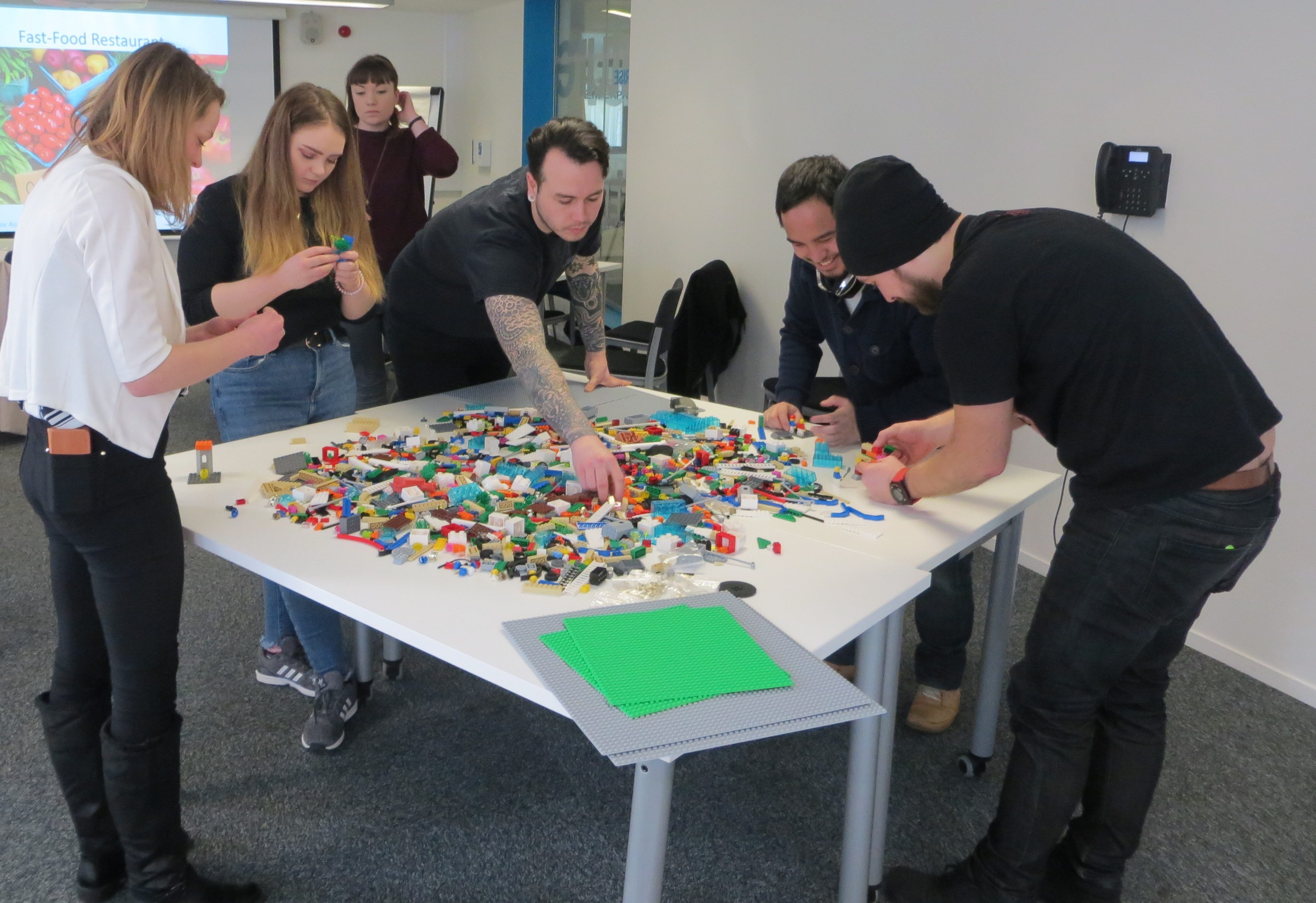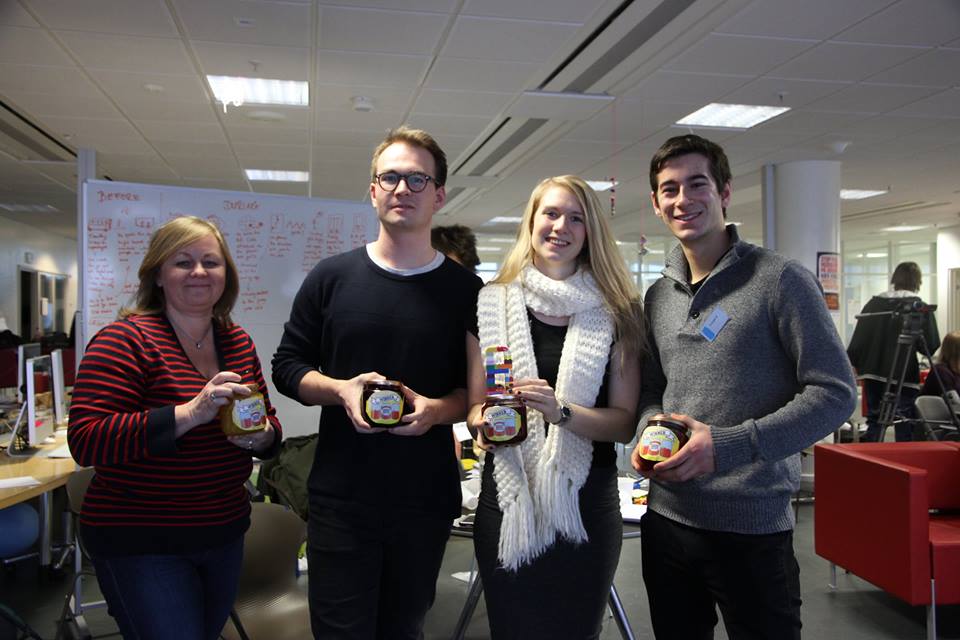Donna Denio and I recently led a workshop for the New Hampshire chapter of the User Experience Professionals Association NHUXPA, specifically to improve user feedback, access subconscious knowledge, and uncover user needs and feelings that might get lost using traditional user-research methods.
The session was very well received and the response from the participants was extremely supportive of LSP as a tool for user experience research. I am quoting Kyle Soucy‘s post on MEDIUM where she gives an overview of the session and shares her personal insights and impressions. Kyle is a board member of NHUXPA and organized the LSP event.
Using LEGO® Serious Play® in UX Research
My notes from the NH UXPA March 2018 Meeting
Kyle Soucy, Founding Principal, Usable Interface. UX Research Consultant. www.usableinterface.com
Mar 28, 2018
The NH chapter of the User Experience Professionals Association (NH UXPA) held an excellent workshop during their March meeting on 3/27/18. We were lucky enough to have two LEGO® Serious Play® Certified Facilitators, Donna Denio and Dieter Reuther, run a workshop for us to demonstrate how we could use the LEGO® Serious Play® method when conducting qualitative user research.
First, a little history…
Donna and Dieter explained that this method was first created in the late 1990’s by Johan Roos and Victor Bart, two business professors from Switzerland’s Institute for Management Development, and Kjeld Kristiansen, the leader of The Lego Group. Initially, they wanted a methodology that would help business executives develop their own strategies, but found that the uses and implications of this method are much more far-reaching. In 2009, LEGO Group made Serious Play® open source, so it is available to any qualitative researcher.
What is it exactly?
LEGO® Serious Play® method is a facilitated meeting in which participants are led through a series of questions and each participant builds his or her own 3D LEGO® model in response. These 3D models serve as a basis for group discussion, knowledge sharing, strategic visioning, problem-solving, and decision making. This method can be facilitated in groups or one-on-one and can be used to improve group problem solving, communication, team building, and even help to elicit more feedback during user research interviews.
Why it works
Sometimes it can be difficult to voice our feelings, needs, desires, and even ideas. By building a physical 3D model instead, we have a vessel through which we can express what we might not otherwise be able to articulate in words. This method gets participants to use metaphors to discuss complex concepts and it helps to unlock their imagination.
Most importantly, the LEGO® brick is a common language that we all understand that requires us to think with our hands. When building, we use both hands which activates both sides of our brain. This stimulates areas of the brain that cannot be accessed any other way. Harnessing the hand-brain connection is powerful!
Also, one of the biggest reasons it works is because everyone participates. All participants are required to build and share using the same medium, which means everyone has an EQUAL voice in this exercise no matter their employment level.
“You learn more about a person in an hour of play than a year of conversation.“ — Anonymous
The Workshop
To get started, Donna and Dieter laid some ground rules which they referred to as “Building Etiquette”:
- Everyone builds and shares (as previously mentioned).
- Trust your hands. Don’t just have a meeting with yourself.
- Don’t spend too much time thinking. You can start to build before you even know what you want to build. The act of building helps to bring out more ideas.
 We were all seated in groups of 4-6 around tables that had a random mix of LEGO® bricks, mini figures, and other assorted pieces all spread out.
We were all seated in groups of 4-6 around tables that had a random mix of LEGO® bricks, mini figures, and other assorted pieces all spread out.
Exercise #1: Share YOU — What’s your professional superpower? (4 mins)
This was a great warm-up exercise. We had 4 minutes to think about what our professional superpower was and build a model of it.
Queue the music!
Suddenly, some very fun music started playing and a large countdown clock appeared on the screen. I think our group was initially in shock by the time limit, but it really forced us to focus immediately on the question and get right to building. Within seconds, we were all bopping along to the music and scrummaging through the pile of legos.
 Once our time was up, each of us had 1 minute to share our models with the others at our table and then one person from each table had to share their model with the entire group of workshop attendees. My superpower was self-discipline and it was a lot of fun to learn what other people’s were… organizing, bullshit detecting, planning, interviewing, Etc. In just 10–15 minutes we certainly learned more about each other and had a lot of fun in the process.
Once our time was up, each of us had 1 minute to share our models with the others at our table and then one person from each table had to share their model with the entire group of workshop attendees. My superpower was self-discipline and it was a lot of fun to learn what other people’s were… organizing, bullshit detecting, planning, interviewing, Etc. In just 10–15 minutes we certainly learned more about each other and had a lot of fun in the process.
It was interesting to note that the models didn’t need to be complicated. Dieter mentioned that you can tell a story with just a single brick and that there’s always enough LEGO® bricks or pieces to build a model.
Exercise #2: Opposites Attract — What’s a divide in your life? (4 mins)
 This was when it really got interesting. Donna and Dieter created an imaginary user research session for a new app where we all played the role of the end users. The fictitious app was called “Opposites Attract” and its goal was to help bring people together that are divided due to having completely opposite opinions about a topic (anything from food to politics). I’d say this is an app that could definitely be useful nowadays, eh? ;) We had 4 mins again to think of a divide going on in our lives and build it.
This was when it really got interesting. Donna and Dieter created an imaginary user research session for a new app where we all played the role of the end users. The fictitious app was called “Opposites Attract” and its goal was to help bring people together that are divided due to having completely opposite opinions about a topic (anything from food to politics). I’d say this is an app that could definitely be useful nowadays, eh? ;) We had 4 mins again to think of a divide going on in our lives and build it.
I can’t even describe the emotion that came out of this build. All of us immediately shared deeply personal divides in our lives and got very deep without hesitation. My model reflected religion and some others touched on gun control, politics, living environments, and other physical and emotional divides with loved ones. It was powerful!
Exercise #3: What’s the feeling of being divided? (4 mins)
 This was the easiest build for me. I knew exactly how the divide made me feel and found it almost therapeutic to build a model that reflected it.
This was the easiest build for me. I knew exactly how the divide made me feel and found it almost therapeutic to build a model that reflected it.
It was very interesting to look at the pieces spread out before you and see what ones spoke to you for each exercise. For example, someone at my table picked up a mini-figure with a broken hand because it reflected how she felt broken when being divided. I think we all found that the more we sat with our models and played with them the more they evolved.
Exercise #4: What would unify the divided? (4 mins)
We were instructed to not take apart our models after this exercise because we would be building upon them as part of the next one. For me, coming up with a model that reflected a way to unify people was a challenge. I was a bit stumped when looking at the pile of legos at first, but I eventually became drawn to the white and clear LEGO bricks because I wanted to build something that represented clarity and purity — a place for divided people to go and be free from all the distractions so we could truly hear one another. I also saw others using the LEGO pieces to form physical bridges between the divided parties. Everyone had their own creative solution to fit their own scenario.
Exercise #5: Build a Landscape (4 mins)
 For this last exercise, each table had to take their individual models from the previous exercise and create one landscape — a single model that bridges together the story. It was explained that landscapes help us to see the big picture, create meaning, and identify and common patterns. Building the landscape together demonstrated how this is a storytelling tool that’s safe and inclusive.
For this last exercise, each table had to take their individual models from the previous exercise and create one landscape — a single model that bridges together the story. It was explained that landscapes help us to see the big picture, create meaning, and identify and common patterns. Building the landscape together demonstrated how this is a storytelling tool that’s safe and inclusive.
My Thoughts
We spent two hours doing this workshop and the time just flew by! Without a doubt, I believe this is an excellent method for eliciting needs and feedback from end users during user research studies. To me, using LEGO® Serious Play® for UX research is a lot like running a collaging exercise. I’m a big fan of projective techniques and I think both of these methods provide a great way to get rich data that you may not otherwise get through a traditional in-depth interview. I’m anxious to get more training in this method and add it to my UX Research toolbox!
PixelMEDIA Rocks!
Thank you to PixelMEDIA for sponsoring and hosting this wonderful meeting! We could not have asked for a better meeting space for this wonderful workshop and the food and drinks they supplied were awesome. Thank you for always supporting the NH UX community and helping us to grow and learn!










 Become a LEGO Serious Play facilitator - check one of the upcoming training events!
Become a LEGO Serious Play facilitator - check one of the upcoming training events!
Thank you so much for this wonderful article. I felt so inspired with those fantastic questions! As luck would have it my upcoming podcast was on social divides and so I included an outline of your story in the intro for my latest podcast. You can take a listen on episode #3 here: https://buildingteams.co.za/podcasts/. This podcast is specifically geared towards LSP as a key theme, so give me a shout if you want to come on as a guest to talk about LSP and user experience design. Thanks again! Belinda